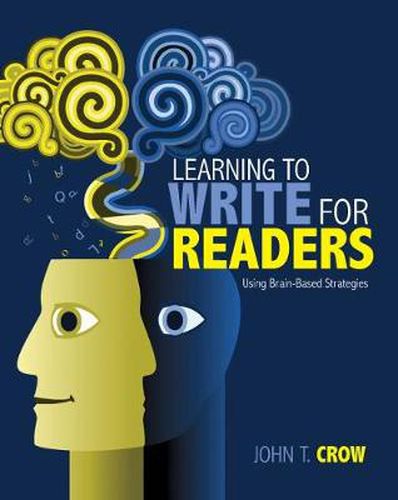Readings Newsletter
Become a Readings Member to make your shopping experience even easier.
Sign in or sign up for free!
You’re not far away from qualifying for FREE standard shipping within Australia
You’ve qualified for FREE standard shipping within Australia
The cart is loading…






As students move from grade to grade, they often seem to forget writing concepts, skills, and strategies taught in previous years. How can we help ensure that our writing instruction and student learning stick? Many of the concepts we try to teach students in our writing and literature classrooms are difficult to explain or demonstrate. But once students have a basic idea of how a reader’s brain processes written material, these same concepts become more accessible, more logical, and therefore more teachable.
In the first two chapters of Learning to Write for Readers, John T. Crow uses non-technical language and fun classroom demonstrations to explore how proficient readers process written material. The remaining chapters apply this perspective to specific areas of writing instruction, including analyzing texts and audiences; experimenting with sentences, paragraphs, and essay writing; and helping Standard English learners acquire academic English.
This brain-based approach to writing instruction will help you build from the tremendous storehouse of knowledge students already possess about language to help them learn what they need to know about writing.
$9.00 standard shipping within Australia
FREE standard shipping within Australia for orders over $100.00
Express & International shipping calculated at checkout
As students move from grade to grade, they often seem to forget writing concepts, skills, and strategies taught in previous years. How can we help ensure that our writing instruction and student learning stick? Many of the concepts we try to teach students in our writing and literature classrooms are difficult to explain or demonstrate. But once students have a basic idea of how a reader’s brain processes written material, these same concepts become more accessible, more logical, and therefore more teachable.
In the first two chapters of Learning to Write for Readers, John T. Crow uses non-technical language and fun classroom demonstrations to explore how proficient readers process written material. The remaining chapters apply this perspective to specific areas of writing instruction, including analyzing texts and audiences; experimenting with sentences, paragraphs, and essay writing; and helping Standard English learners acquire academic English.
This brain-based approach to writing instruction will help you build from the tremendous storehouse of knowledge students already possess about language to help them learn what they need to know about writing.